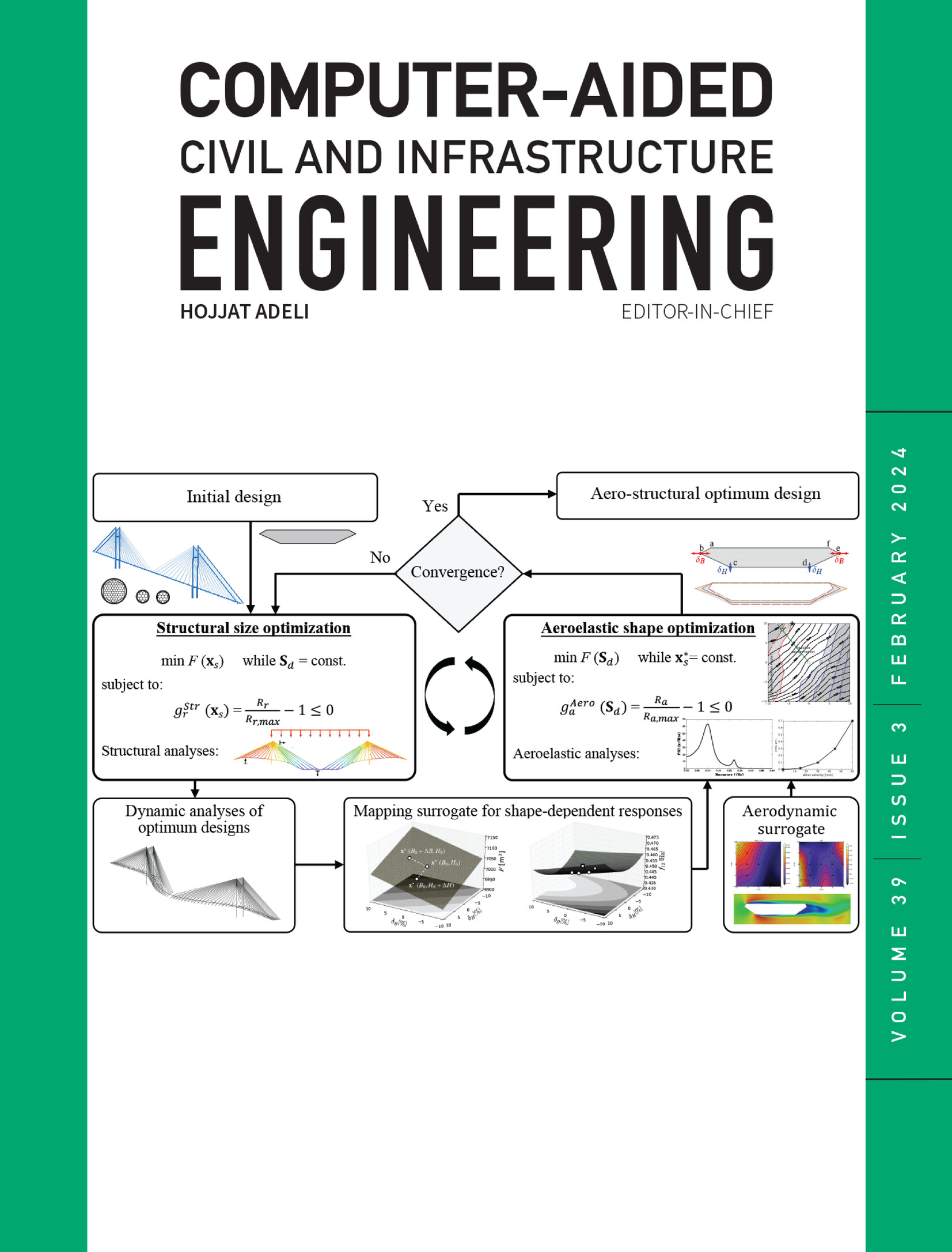用于自动估算建筑物最低层标高的综合视觉语言和基础模型
IF 8.5
1区 工程技术
Q1 COMPUTER SCIENCE, INTERDISCIPLINARY APPLICATIONS
引用次数: 0
摘要
街景图像已成为城市分析研究的宝贵资源。最近的研究探索了街景图像在估算最低楼层标高(LFE)方面的潜力,为传统的现场测量提供了一种可扩展的替代方法,这对于评估物业的洪水风险和损坏程度至关重要。虽然现有方法依赖于物体检测,但图像分割技术的引入扩大了街景图像在估算最低楼层标高方面的用途,不过在分割质量和区分前门与其他门的能力方面仍存在挑战。为了解决 LFE 估算中的这些挑战,本研究将分割基础模型 Segment Anything 模型与视觉语言模型(VLM)相结合,对街景图像进行文本提示图像分割,以用于 LFE 估算。通过评估各种 VLM、集成方法和文本提示,确定了最适合街景图像分析和 LFE 估算任务的模型,从而将当前基于图像分割的 LFE 估算模型的覆盖率从 33% 提高到 56%。值得注意的是,我们提出的 ELEV-VISION-SAM 方法显著提高了 LFE 估算的可用性,几乎适用于街景图像中可见前门的所有物业。此外,研究结果首次对基于街景图像的低频反射估算的各种视觉模型进行了基线和量化比较。该模型和研究结果不仅有助于推进城市分析中的街景图像分割,还为其他土木工程和基础设施分析任务中的图像分割任务提供了一种新方法。本文章由计算机程序翻译,如有差异,请以英文原文为准。
Integrated vision language and foundation model for automated estimation of building lowest floor elevation
Street view imagery has emerged as a valuable resource for urban analytics research. Recent studies have explored its potential for estimating lowest floor elevation (LFE), offering a scalable alternative to traditional on‐site measurements, crucial for assessing properties' flood risk and damage extent. While existing methods rely on object detection, the introduction of image segmentation has expanded the utility of street view images for LFE estimation, although challenges still remain in segmentation quality and capability to distinguish front doors from other doors. To address these challenges in LFE estimation, this study integrates the Segment Anything model, a segmentation foundation model, with vision language models (VLMs) to conduct text‐prompt image segmentation on street view images for LFE estimation. By evaluating various VLMs, integration methods, and text prompts, the most suitable model was identified for street view image analytics and LFE estimation tasks, thereby improving the coverage of the current LFE estimation model based on image segmentation from 33% to 56% of properties. Remarkably, our proposed method, ELEV‐VISION‐SAM, significantly enhances the availability of LFE estimation to almost all properties in which the front door is visible in the street view image. In addition, the findings present the first baseline and quantified comparison of various vision models for street view image‐based LFE estimation. The model and findings not only contribute to advancing street view image segmentation for urban analytics but also provide a novel approach for image segmentation tasks for other civil engineering and infrastructure analytics tasks.
求助全文
通过发布文献求助,成功后即可免费获取论文全文。
去求助
来源期刊
CiteScore
17.60
自引率
19.80%
发文量
146
审稿时长
1 months
期刊介绍:
Computer-Aided Civil and Infrastructure Engineering stands as a scholarly, peer-reviewed archival journal, serving as a vital link between advancements in computer technology and civil and infrastructure engineering. The journal serves as a distinctive platform for the publication of original articles, spotlighting novel computational techniques and inventive applications of computers. Specifically, it concentrates on recent progress in computer and information technologies, fostering the development and application of emerging computing paradigms.
Encompassing a broad scope, the journal addresses bridge, construction, environmental, highway, geotechnical, structural, transportation, and water resources engineering. It extends its reach to the management of infrastructure systems, covering domains such as highways, bridges, pavements, airports, and utilities. The journal delves into areas like artificial intelligence, cognitive modeling, concurrent engineering, database management, distributed computing, evolutionary computing, fuzzy logic, genetic algorithms, geometric modeling, internet-based technologies, knowledge discovery and engineering, machine learning, mobile computing, multimedia technologies, networking, neural network computing, optimization and search, parallel processing, robotics, smart structures, software engineering, virtual reality, and visualization techniques.

 求助内容:
求助内容: 应助结果提醒方式:
应助结果提醒方式:


